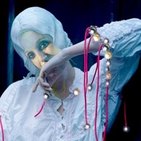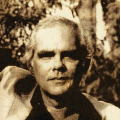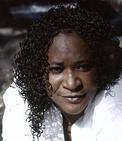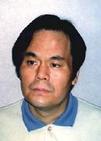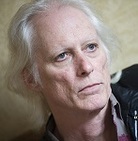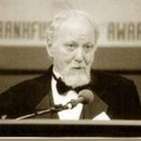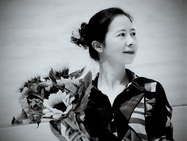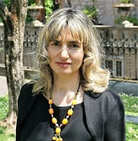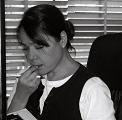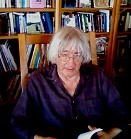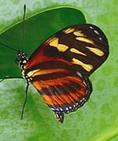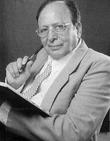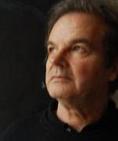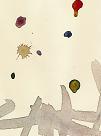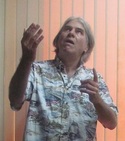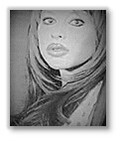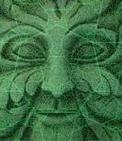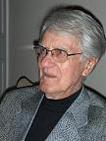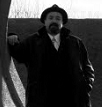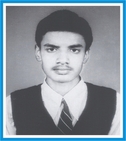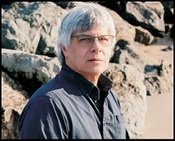Sayumi Kamakura's Haiku universe
| Sayumi Kamakura's Haiku universe |
by Santosh Kumar While discussing Sayumi Kamakura's Mastery of the "HAIKU MOMENT", it will be quit prudent to keep in mind her view that kigo and 7-5-7 syllables should not be mandatory. So it was with Basho too as pointed out by Ueda: "Rather than sticking to the formulas of kigo , which remain popular in Japan even today, Bashō aspired to reflect his real environment and emotions in his hokku" ( 50). The fact is that most of the Western poets and Kamakura will never accept kigo as indispensable to haiku. She made it clear in an interview that more significant than kigo is the spontaneity and depth of emotion. Sayumi told the interviewer: "Season words are still merely words. As long as they are words, then the emotions the author attempts to convey with them should take precedence over the words themselves. The Japanese haiku that has touched me are those where the author's true sentiments burst from the words. What is most important in haiku is how much true feeling is included in the poem" (An Interview with Sayumi Kamakura by Kan'ichi Abe, Simply Haiku, 2003). Allen Ginsberg too expresses a similar view as he remarks that the 17 characters of this Japanese form just don't cut it as 17 syllables of English, and that dividing them up in 5-7-5 syllable lines makes the whole thing an exercise in counting, not feeling, and too arbitrary to be poetry (Bob Holman & Margery Snyder). Sayumi Kamakura is a great artist writing haiku in a great style without counting syllables. "While others are arguing about the form, style, and syllable count of each line comprising a haiku poem, Sayumi Kamakura has avoided such sequencing of analysis-paralysis, and has continued with her writing of haiku poems in a contemporary manner without such unnecessary and arbitrary restrictions" (Joseph S. Spence, Sr.) Richard Gilbert is quite right as he remarks that the following haiku at fertilization dazzled by an elephant's yawn reveals the modern-haiku genius of Sayumi Kamakura ( Noon: Journal of the short poem). Sayumi's haiku doesn't follow the classical Japan's haiku poets' established system of 5-7-5 syllables. It is very good that there is considerable freedom from these restraints in Sayumi's haiku world. Kerouac too expresses his conviction that the use of 17 syllables should never be made mandatory for writing haiku. Kerouac states: "A 'Western Haiku' need not concern itself with seventeen syllables since Western Languages cannot adapt themselves to the fluid syllabic Japanese." The fact is that the 'Western Haiku' is able to xpress and reveal a lot more in three short lines than in any other way. What, then, it might be asked, is Sayumi Kamakura's contribution to haiku poetry? Do her haiku really show that she is a "modern-haiku genius"? Adam Powell gives the answer characteristically, and it will certainly help in understanding the complexity of Sayumi's haiku: "In the work of Sayumi Kamakura, the "haiku moment" becomes rather the "momentousness of the haiku". She has the gift of transforming the all-too-common misunderstanding of reductionism to something that is - in fact - larger than life; like the mystery of the bonsai. Art is never about limitation, but rather about playing within structure(s) - and pressing, kneading, pushing against boundaries to give the appearance of being larger than a mathematician's (or literary/art historian's, or critic's) measurements". Powell further says: "Sayumi Kamakura effectively exerts a feeling of timelessness in her haiku, and in the mind and experience of the reader. She accomplishes this by her adeptness in revealing the veil behind the veil. She is the quintessential "goddess" archetype of the contemporary haiku artist, lifting the veils of everything around her." At this point I quote the following haiku to successfully show that Powell's comments are very true: himawari o kakage aozora wa tomaranai raising a sunflower high the blue sky does not stop - "Haiku Shiki" ("Haiku Four Seasons," a monthly haiku magazine) May 2009 Issue The above haiku creates an impression of intensity. It is concerned with the immediate experience. In this visual image we catch a glimpse of a person running with a sunflower under the sky. This amounts to merging with the sky, and then separating. The lines "the blue sky / does not stop" suggest that eternity is winning. Sayumi is describing the tensions between change and the changeless, temporary and eternal. Ban'ya aptly points out that Sayumi Kamakura's haiku are characterized by the quality of animism: Cineraria daisies-- Ban'ya defines animism in the following words-"The Japanese inclination towards season words, including words indicating small animals and plants, came from animism: respecting spirits in not only human beings and animals, but also other elemental forms like rocks, water, fire, air, and the sun. Respecting and appreciating everything existing in nature have strongly and naturally endured in the Japanese consciousness of the 20th century" (Japanese/English Haiku 2001). Ban'ya's haiku collection Earth Pilgrimage includes a section entitled "Animistic Japan" containing thirteen animistic haiku (13-25). This anthropomorphic quality or pathetic fallacy is present in her several haiku: The Greek "a" rain stopped sounds (Ginyu, No. 11, July 2001, p. 2) Let me illustrate Sayumi's attitude toward life from the following haiku included in her A Crown of Roses. Patricia Prime has pointed out in her review of this haiku collection: "Lyrical, rich with imagery and restrained language, this is a memorable collection, full of passion and energy". Tradition says the face of Spring is the face of the dragon p. 7 In this haiku Sayumi points out that the dragon's face is the symbol of prosperity and spring, the path to a greater enlightenment. The Celestial Chinese Dragon is comparable as the symbol of the Chinese race itself. Chinese around the world, proudly proclaim themselves "Lung Tik Chuan Ren" (Descendents of the Dragon). Dragons are referred to as the divine mythical creature that brings with it ultimate abundance, prosperity and good fortune. Emperors in many Asian countries claimed to have dragon ancestors. This made them so proud, that everything they used was decorated with dragons and described in terms of the dragon: dragon-throne, dragon-robe, dragon-bed, dragon-boat. Calling an emperor "dragon-face" was quite popular. Thus, we find that Sayumi associating the Dragon with the spring is eminently sane as there is a long tradition of higher secrets about the Dragon. This makes it evident that Sayumi has a very deep knowledge of oriental mythologies. It is necessary to draw attention to some salient characteristics of Sayumi's haiku poetry as revealed in her collection A Crown of Roses. Let me quote the following haiku from this extraordinary book: In the deepest part of the kaleidoscope: the Emperor's room p. 4 For the stone Queen far in the distance: a crown of roses p.5 For the stone Queen far in the distance: a crown of roses p. 5 If I'm a primrose at your side, I'm allowed to bloom p.7 Sayumi is perhaps suggesting in the above haiku that " the Emperor's room" is available only to those who have vibrant passion and rapturous longing. Jesus said: "Strait is the gate, and narrow is the way, which leadeth unto life, and few there be that find it" (Matthew 7:14). Sayumi means to say that only a brave human soul with "deepest" and innermost efforts may have the key to "the Emperor's room." The tremendous poetic beauty of the haiku lies in its dramatization of an ardent pilgrim's quest for God's altar. In the second haiku quoted above, Sayumi describes Queen's body trapped in stone with only "a crown of roses" to comfort her, and we have no idea how to free her from her prison. There can be two interpretations of this mysterious haiku. The first interpretation is that the true temple is built when the symbolic king and queen are in balance, and the woman is given equal power. Another interpretation of the "stone woman" is possible in psychoanalytical terms. "Far in the distance" or in ancient times the Stone was the central symbol of the mystical terminology of alchemy, symbolizing perfection, enlightenment, heavenly bliss, theophany and of Christ. Jung understood "the quest for the philosopher's stone (as the quest for the holy grail) as an allegory of the process of Individuation, mirroring "a destillatio and purification" of the individual soul". It appears that Sayumi in this haiku is playing with alchemy and its symbolism. Her alchemic quest is the transmutation of woman into art, and only for such woman "The Crown of Roses" is reserved. In the third haiku, Sayumi reveals the unique power of love. In Shakespeare's famous play Macbeth, the porter speaks of "treading the primrose path to the everlasting bonfire". This implies the easy, pleasant self-indulgent way, as opposed to the "rocky road of righteousness". By adding the words "at your side", Sayumi's meaning becomes utterly different from Shakespeare. What matters in true love is union of true minds-to constantly remain unchanged and faithful "at your side". A little nectar and a deep chill on the altar p. 13 Peace of mind, all passions spent-this seems to be her meaning. Today altars are used particularly in the religions of Buddhism, Hinduism, Shinto, Taoism, as well as Christianity. We may taste nectar only when in the course of meditation we feel "deep" May every supplication on the altar be a deep cry of the soul for pardon and help! More difficult to explain - it's a very deep shiver right through our core. Scars, "deep chill" and salvation are interconnected. Sayumi most genuinely says that only when we become almost breathless with emotion, our worship at the altar can assume perfection, and grant nectar. Sayumi's concept is near to T. S. Eliot's idea of the "refining fire" in the Four Quartets and in The Waste Land , and Dante's Purgatorio (Bernard Bergonzi 171-73). Sayumi Kamakura's nectar on the altar is the celestial rose of Dante's Paradiso. Sayumi feels that there is strong affinity among objects of nature: Just as the sky requests- the tree buds bloom p.14 In the above haiku, Sayumi is evidently the high priestess of nature. She is here using the pathetic fallacy or anthropomorphic fallacy while describing inanimate objects as if they had human feelings, thought, or sensations. The term was coined by John Ruskin in his Modern Painters(1856), in which he wrote that the aim of the pathetic fallacy was "to signify any description of inanimate natural objects that ascribes to them human capabilities, sensations, and emotions." No doubt, the pathetic fallacy is a scientific error, but it has been used by Shakespeare, the Romantic poets and the modern poets like William Carlos Williams, Theodore Roethke, Mary Oliver, Eavan Boland, and John Ashbery. Grass seeds flying to discover the pure sky p. 19 What is suggested in this haiku is the tensions between the change and the changeless, the flying grass seed and changeless pure sky. The most unexpected turns in her haiku at times may puzzle the understanding while most opposite images meet and mingle in the strangest of dances. In another haiku showing her self-questioning, Sayumi raises a pertinent query whether a star cares about a star: I care about you- does a star care about a star? p. 28 The question of pathetic fallacy in Sayumi's haiku requires much more interpretation than has yet been given to it, as in the above haiku without any predilection she wants to be sure if nature has human feelings. The significant thing is that Sayumi is always trying to get even approximately at the truth. This point needs to be clarified by quoting the following haiku: They bend their knees in sleep: the father, child, and cucumber p. 38 This haiku is a clear example of Sayumi's use of pathethic fallacy in her nature haiku, as we see "cucumber" imitating human beings bending "their knees". In fact, Sayumi like Wordsworth has a warm sympathy for objects of nature. Sayumi's supreme triumph in her haiku about nature is that she adds a note of mysticism also. She has not only sight, but insight, for example: After breaking a pomegranate, an evening wind still wanders about p. 44 Sayumi feels that in the simplest nature, in an evening wind, there is emotional interest. That is why this haiku is worthy of careful reading. The marvel of the haiku is present in its two dominant actions; the first is a pomegranate broken by the wind, and the second action is the wind in motion after breaking the fruit. Thus, it is quite clear that Sayumi is most convincing and alive in this haiku, as she observes the objects of nature full in face with an immense zest and heartiness. The fact is that Sayumi is able to create the "aha moment" in her haiku about nature. Edward Weiss rightly says: "The thing about haiku is that if it's done right, it's supposed to put you in a trance state. That is, the "aha" moment or "ah" moment as I like to call it comes from the juxtaposition between line 1 and lines 2 and 3. This is not a koan (a question with no real answer) but a series of images that create a snapshot of a feeling or mood for the reader". In the following haiku Sayumi invokes the month of May: Come, May! Without soiling our world! p. 15 From mountain, moorland, heath and coast to woodland, riverbank, valley and park, May is a perfect month for watching wildlife. The month May has been named for the Greek goddess Maia, who was identified with the Roman era goddess of fertility. Sayumi warns May not to spoil "our world", since during this month tornadoes, thunderstorms can also produce dangerously large hail. In another haiku we find Sayumi is suggesting that the persons with a mission for peace have to suffer endless pains: The sky clears- the sky's pain has no limits (Ibid) There seems at least two possible interpretations of this haiku: (1)The blue sky is a symbol of peace, joy and freedom. (2) We should certainly point out a second interpretation of "the sky's pain / has no limits". The sky has been a mute witness to two World wars. More than 15 million people were killed in the First World War, making it one of the deadliest conflicts in history. The sky has seen it, and Sayumi is quite right in saying that the sky has experienced limitless pains. Sayumi's moral consciousness is at its peak here, as by enfusing the sky with human feelings and transforming inanimate objects of nature into animate and living human beings she is able to create most artistic haiku. To elaborate the argument further, I may add that the sky has also felt the "pains" of the Second World War when the nuclear bombs destroyed Japanese cities of Hiroshima and Nagasaki, and also the Holocaust, the killing of approximately six million Jews (overwhelmingly Ashkenazim), as well as two million ethnic Poles and four million others who were deemed "unworthy of life". The most important point to be noted is that Sayumi often identifies with the objects of nature. In other words, the sky is Sayumi herself expressing the sensibility and anxiety of contemporary world. As a matter of fact, Sayumi provides new energy and freshness to the world of nature by personifying and humanizing it as a symbol for joy, peace, unfettered living. The above discussion proves her extraordinary range of mind. The following haiku is one of the finest creations: Residing in myself: a fool, an idiot, and an evening light p. 49 Sayumi says that a fool, an idiot resides in herself. What, then, it might be asked after reading this line, is Sayumi's meaning? Does she point out that the wisdom of Shakespeare's Fools is present in her? Sayumi herself gives the answer in the third line that "an evening light" also dwells within her. At this point it might be commented that spontaneous joy and fascination for the sacred "evening light" can be experienced only if we learn to become simple-hearted like Shakespeare's Fools. Mark Edmundson remarks: "Shakespeare's fools are subtle teachers, reality instructors one might say, who often come close to playing the part that Socrates, himself an inspired clown, played on the streets of Athens. Shakespeare's fools are subtle teachers, reality instructors one might say, who often come close to playing the part that Socrates, himself an inspired clown, played on the streets of Athens"("Playing the Fool"). In this humble confession lies Sayumi's strength. To admit the existence of a fool within our deepest self is the mark of a genius. We should remember that the words of wisdom always drop from the mouths of Shakespeare's Fool. In the third line, she is able to create the genuine "haiku moment" while proclaiming that "an evening light" also resides in herself. This is the most original haiku as it shows her love towards sacred "evening light" in the last line, and this spiritual awakening is possible only when life or storm of reality is recognized as comedy and we are able to discipline the panic at the edge of the abyss through simple light-heartedness and gaiety of Shakespeare's Fools. Sayumi has created a great haiku, and it becomes an immortal work of art. The time of evening has always been associated with sacredness and worship of the deity. "...but it shall come to pass, that at evening time there shall be light" (Zechariah 14:7). Wordsworth also describes the sacredness of evening: It is a beauteous evening, calm and free, The holy time is quiet as a Nun Breathless with adoration; the bread sun Is sinking down in its tranquility; The gentleness of heavens broods o'er the Sea: Listen! the mighty Being is awake, And doth with his eternal motion make A sound like thunder - everlastingly. The predominant note in Sayumi's haiku is her attack on ego and her emphasis that great wisdom behind simplicity and gaiety ("a fool, an idiot"), and delight in sacred "evening light" may save our contemporary world haunted by genocide, global conflict, and nuclear destruction. Let our voices be delightful Mackerel clouds p.40 After reading the above lines, it is apparent that haiku seems to be an instrunment in her search for joy. There is an all-round impression of happiness in this haiku; the voices become "delightful", "Mackerel clouds" looking like fish scales, and the poet's prophet-like message is "Let our voice / be delightful". Importance of this haiku is great because it comes to us at the moment when the times are "out of joint" in this age of anxiety. To Sayumi Kamakura has come a revelation through "Mackerel clouds". In another following haiku, Sayumi is no longer in dream. She is conscious of "fear" and "autumn leaves" ( 47), " Japanese pampas grass / completely withered" ( 49), fleeting beauty of the rainbow inspiring her to ask " Will Japanese remain?"( 57). This shows that Sayumi has made the Voyage within. Her search is for a Tree of Enlightenment: Ivies, cedars, pines: Where is a tree on which the light converges p. 17 Sayumi's quest in this haiku expresses itself in the journey starting from "Ivies, cedars, pines". The point is that she gazes at these trees, but they they fail to provide her light or elixir. She is a searcher after a tree of light. James Shea aptly says in his Foreword to Sayumi Kamakura's A Crown of Roses that her frequent travels in Europe have an impact on her haiku writing: "The haiku in this collection span from 1992 to the present, yet the impulses behind Kamakura's work stem, in part, from a year she spent in Paris with her husband, the poet Ban'ya Natsuishi, in the late 1990's. According to Kamakura, during her travels in Europe, her sense of the possibilities for haiku expanded and she began to compose poems more freely." Not only in A Crown of Roses, but also in her haiku collection A Singing Blue: 50 Selected Haiku, there are some wonderful haiku devoted to nature, and this is enough to demonstrate that Sayumi is often expressing her vision through the objects of nature: Now I'd bathe in falling blossoms... until my cheeks would burn p. 22 Hanging my jacket on a branch and calling up February clouds p. 23 In the first haiku Sayumi expresses her longing to "bathe in falling blossoms", and this is one of her ways to find trance, and her final fusion with nature. Her passion for nature is revealed in the second haiku where she is "calling up / February clouds". This is an exotic haiku beyond the borders of commonplace life, and it shows Sayumi turning inwards to centre her attention upon nature. The clouds are usually interpreted as a symbol of something that is fleeting, temporary or short-lived. Her fascination for the clouds is visible in the following haiku also: Birds enter, the evening sun enters- the invincible cloud Taj Mahal Review June 2008, p. 484 A cloud: the fortress of my heart disappearing and appearing Taj Mahal Review Dec 2008, 320 The clouds are her solace from the storm. The Romantic poets of English literature were inspired by the clouds. Shelley writes about the cloud: "I bring fresh showers for the thirsting flowers, / From the seas and the streams." Wordsworth too writes, "I wandered lonely as a cloud". For Sayumi, the cloud is "the fortress of my heart". The cloud is her rock, her fortress, her deliverer and shield. It is a mode of deliverance from the weight of life. It is the strange beauty of clouds "disappearing and appearing" which attracts her. It is curious to speculate how Sayumi describes cloud as "invincible". The aloofness of the cloud makes it unconquerable. It demonstrates that it can walk alone in the sky. Each line in the following haiku is alive with her love for nature: The pink cosmoses searching for blue sky Taj Mahal Review, Dec 2009, p. 160 Once more For the sake of shining, Camellia petals fall World Haiku No. 6, 2010. p. 27. The poet Sayumi describes pretty, wonderful, pink-colored cosmoses under the blue sky as a backdrop. In Buddhism, the blue sky is a symbol of "Sunyata" which means void or emptiness, the ultimate reality, regarded as a step to salvation. The haiku suggests elevation of the natural world to a higher state. The second haiku reveals the lush fragrance of camellia flower buds. Sayumi's artistry is visible in another haiku about cloud: Floating cloud on the sea always is the first person Taj Mahal Review June 2009, p. 185 To comprehend this haiku it is indispensable to interpret the words "the first person". Only then we may be able to throw some light on the comparison of the "Floating cloud on the sea" with the "first person". It is well-known that in a first-person narrative a story is narrated by only one character at a time. It is very likely that the first-person cloud is the symbol of Sayumi's own stream of consciousness or interior monologue. Another probable interpretation is that the floating cloud on the sea is Sayumi herself and her inner life full of vision. Henry James discusses about "the romantic privilege of the first person" in his Preface to The Ambassadors (qtd.in Goetz, William R. Henry James and the Darkest Abyss of Romance). In other words, Sayumi prefers to find religious or moral ideals by herself without the help of a second person. Someday my knees will be wrapped in brilliant clouds A Crown of Roses, p. 58 If you walk among the bare trees, you can see eternity Harvests of New Millennium Jan 2008, 232 The tree leaves Change from green to yellow- Is this love? "In Vilnius, Lithuania".GINYU No. 45, 2010, p. 81 Sayumi says in the first haiku that battle will be won - on our knees in prayer or knees "wrapped in brilliant clouds". In the second haiku Sayumi describes the metaphorical journey of a person pursuing eternal life among the bare trees.The trees signify the 'unknown' where Sayumi wants to get lost "He has made everything beautiful in its time. He has also set eternity in the hearts of men .." (Ecclesiastes 3:11) In this haiku, Sayumi's reflection is the boldest. Like William Wordsworth, she feels that nature is a great moral teacher. Kerouac in his prose poem says: "You are the golden eternity because there is no me and no you, one only golden eternity" (The Golden Eternity). Sayumi thinks that walking among the bare trees will certainly let us find eternity and timeless existence. The heart of the haiku lies in its subtle suggestion that nature is immortal and in the world of nature alone we may hope to find "the artifice of eternity"(W. B. Yeats). Kachou Fuugetsu "Experience the beauties of nature, and in doing so learn about yourself". In the last above haiku, Sayumi raises a pertinent question why a green leaf changes color. During winter the green chlorophyll disappears from the leaves. The idea of Sayumi Kamakura is that only evergreen love is true love. In the following three haiku, Sayumi's language is simple and clear, yet the meaning is obscure. The sense is mystical, and has great possibilities. Joe Kramp points out the six principles of Zen experience in the haiku poetry. "Jack Kerouac and Randy Brooks have written haiku that exemplify the Zen experience. Their poems exemplify some or all of the 6 principles of Zen (according to Eric Amann's The Wordless Poem: A study of Zen in Haiku): wordless, suchness, nothing special, seasonal word/element, selfless, and oneness. " (Joe Kramp). These principles of Zen are visible in Sayumi Kamakusra's haiku also. He carried blue into the heavens and never returned GINYU 41, p. 38 The yellow of the butterflies- unafraid of the heavens GINYU 42, p. 46 A rainbow comes back to the rock here in the field DPF Anthology 2009, p. 85 Sayumi in the first haiku describes a person ready spiritually for departure from Earth to the heavens. The tumult and excitement , the awesome drama of carrying "blue / into the heavens" may imply a heavenly father in the heavens with whom the speaker will have an intimate encounter. This shows that a haiku is always "the gentle art of disappearing" (Gabriel Rosenstock). "The haikuist momentarily identifies with the phenomena perceived in the haiku moment - "so close an identification with the object that the unstable mentalizing self disappears" (Introduction, The Penguin Book of Zen Poetry, ed. Lucien Stryk)." In the second haiku, the interlinking and interdependence of the butterfly with the heavens intensely increases the complexity of the image of the butterfly "unafraid" in its voyage to the Paradise. In both these haiku, the cutting word or kireji in the last line provides most lucid revelations. The great significance of kireji in a haiku is known to Sayumi, because with the use of the cutting word a haiku grows in stature and survives. Sirane points out that cutting word or kireji may briefly cut the stream of thought, suggesting a parallel between the preceding and following phrases, or it may provide a dignified ending, concluding the verse with a heightened sense. A kireji, or cutting word, typically appears at the end of one of the verse's three metrical phrases (Shirane 521). When it is placed at the end of the final phrase (i.e. the end of the verse), the kireji draws the reader back to the beginning, initiating a circular pattern. In the above third haiku included in DPF anthology, Sayumi's meaning becomes intelligible if we remember that the rock is a popular symbol for Christ. In the wilderness, Moses struck a rock and it poured forth water to refresh the people. Moreover, the rainbow is merely a symbol of His mercies. The meaning of the haiku is that Lord's mercies are our rock, and our fortress in the open air, and they come back again and again to console us in life like a rainbow restoring us with fresh radiance. Even in her earlier collections, Sayumi Kamakura is a haiku poet par excellence. Scorching sun: from out of my own shadow the sound of wings Jun (1984) This haiku reveals Sayumi's miraculous workmanship in writing haiku. Everyone has noticed "scorching sun". Piercing her own shadow and touching the deepest springs of her passion, Sayumi hears the sound of wings, and is able to create a fairy-land providing a splendid relief from the "scorching sun". The impact of reality and how to escape into fantasy adding new fuel to her poetic fire-this is known to Sayumi. This sort of treatment is a part of concentrating on a fleeting moment, "relaxing into this very moment that is complete in itself". This is further clarified by this highly erudite comment: "Haiku awareness is a simple way to slow down and tune in to this fleeting moment, to appreciate what is right in front of us. We pause not only with our body but also with our mind. And sometimes we can be attentive and sometimes we cannot, but that is all right, for the next moment always brings us the fresh possibility to pause and be present again. There are no steps to follow, there is no enlightenment to work toward - there is only the simplicity of relaxing into this very moment that is complete in itself. This naked moment is the only guide we need to relax our mind. We need to trust this: in the midst of our daily life activities, the possibility to slow down, to stop, and then to appreciate naturally unfolds" (Patricia Donegan). Till the inside of my womb's dyed green - my nap Jun (Moisture,1984) The sweetfish- running with its shadow, ever young Ibid My hair endlessly streaming: this is also spring Ibid Its voice stolen by the moomlight the white cat Mizu no Jujika (Water Cross, 1987) That blue surrounding the narcissus a singing hue Tenmado kara (From the Skylight, 1992) This mother's bone-colored milk spurt out! Ibid Having cried out her heart the sunflower stands erect Hashireba Haru (Run to Spring, 2001) At sunrise, the faces of most sunflowers are turned towards the east. To grow well, sunflowers need full sun. The sunflower is weeping inconsolably in the dew. Sayumi in this haiku means to say that the sunflower with dew looks bold, confident and undismayed. Sayumi is quite alive to the glory of wonderful sun flower stirring her to her depths. Her attraction towards the sunflower is quite evident not only in the above haiku written in 2001, but also in the following lines composed in 2010: The sunflower in the wind the face is running the back is staying Harvests of New Millennium, Jan 2010, p. 110 Fog- my second finger pointing to the sky Tranparent Current (2000) This illuminous haiku has its roots in the ring finger reflecting an ancient belief that it is a magical finger with healing power. Bhaisajyaguru, the Medicine Buddha, uses his right ring finger for medicine. The peculiar significance of Sayumi's haiku lies in the fact that she is ecstatic after seeing the fog, a cloud that is in contact with the ground. The fog and her body become one. Her separate identity or existence is merged with fog. In the following haiku included in Tranparent Current (2000), Sayumi Kamakura is full of optimism with an immense physical zest and heartiness, quite different from T. S. Eliot's concept of the world as a wasteland: We shall cross water we shall pass mountains before reaching "hope" Ibid We find another haiku full of great intensity and included in her collection A Singing Blue: Its voice stolen by the moonlight the white cat A Singing Blue: 50 Selected Haiku, p. 29 White cats have a higher incidence of genetic deafness. In Sayumi's haiku the moonlight appears to have "stolen" cat's archetypal, supernatural and CHECKdivine powers of extrasensory hearing and perception. That is why a pure sense of wonder overtakes us when we see the moonlight. The use of "kireji" adds tremendous powr to Sayumi's haiku. "When it is placed at the end of the final phrase (i.e. the end of the verse) kireji draws the reader back to the beginning, initiating a circular pattern" (Shirane 100). The following wonderful haiku from the same colletion: Unable to say 'I love you' ... my bare hands, bare feet implore the mirror Ibid, p. 34 In this haiku we find Sayumi's vision of Love from the inside where the soul is first imagined as incapable to say "I love you" reminding us of Shakespeare's Twelfth Night where Viola who "never told her love" is the symbol of purest love. And then Sayumi achieves the visionary state by imploring the mirror. The image that the mirror sent back was one of sympathy. The more Sayumi studied it, the more the mystification burst in her eyes. It now clearly appears that Sayumi is able to write extraordinary haiku without season words and 5-7-5 format. Ban'ya Natsuishi rightly observes: "I believe that haiku poem can be written well in free form and not only in 5-7-5 syllables (GINYU 44, p. 10)". Natsuishi further clarifies what a western haiku poet should keep in mind while writing haiku: "The Western reader and writer of haiku often misunderstands the purpose of the form and so we have trite haiku that, as Natsuishi says, here describing a haiku from Allen Ginsberg, captured a moment in his ordinary life. But the question remains as to whether this moment really mattered? ...does this haiku reverberate? Does it remind us of anything than a trivial discovery?" (qtd. in Juliet Wilson's review of GINYU 28) No doubt, the framework of Sayumi's thought and images is influenced by Basho about whom J. Thomas remarks: "Bashō was deified by both the imperial government and Shinto religious headquarters one hundred years after his death because he raised the haikai genre from a playful game of wit to sublime poetry. He continues to be revered as a saint of poetry in Japan, and is the one name from classical Japanese literature that is familiar throughout the world" (Rimer 69-70). We should remember that Sayumi like T. S. Eliot has emphasized the great importance of past tradition: "Haiku is borne of the study of works that have come before. This is a truism not limited to haiku alone. One sees it throughout all genres, whether music, painting, sculpture or theater. There are no creative works that do not owe something to their forebears." (The Poetic Achievement of Ban'ya Natsuishi 86). W. B. Yeats also in his Nobel Prize speech remarked: "I think when Lady Gregory's name and John Synge's name are spoken by future generations, my name, if remembered, will come up in the talk...for their work and mine has delighted in history and tradition" (373-374). Sayumi in her haiku is also influenced by Buson and Issa. In fact, without making Basho, Issa and Buson their constant study, the haiku poets of today cannot hope to write to write good haiku. Eri Takase aptly says, "It is said of the three most famous Haiku poets that Basho is the poet, Issa the conscience, and Buson the artist. I find myself going to Basho to look for the poetic moment, to Issa to comment on what is important and for perspective, and it is to Buson I go to for the art that is always before us in everyday life." In Sayumi's haiku, we find Buson's "poetic moment", Issa's "perspective" and Buson's art. These three qualities we find in the following haiku: The top of clouds- I feel like crying a little over pure white GINYU 44, p. 96 This haiku shows that Sayumi Kamakura is one of the pioneers of modern lyrical haiku. She is absorbed with tears of joy, and happily lost in the "pure white" of the clouds. Sayumi Kamakura in her haiku world reveals a largeness of vision, intensity of feeling and exuberant poetic fervor. WORKS CITED _____________Jun (Moisture, 1984), ___________Mizu no Jujika (Water Cross, 1987), _________________Tenmado kara (From the Skylight, 1992), ____________ Kushu (Haiku of Sayumi Kamakura, 1998). _______A Singing Blue: 50 Selected Haiku. Tr. Stephen Henry Gill. Ginyu Press, Japan, 2000. _____________Harvests of New Millennium. Cyberwit, India, Jan 2008 Kamkura, Sayumi. A Crown of Roses. Tr. James Shea & Jim Kacian. Cyberwit, India. Third edition, 2009 _____________Taj Mahal Review. Cyberwit, India, June 2008 _____________Taj Mahal Review. Cyberwit, India, Dec 2008 _____________Taj Mahal Review. Cyberwit, India. June 2009 _____________Tr. James Shea. Taj Mahal Review. Dec 2009 _____________Harvsts of New Millennium. Cyberwit, India, Jan 2010 _____________World Haiku. Ed. Ban'ya Natsuishi. No. 6. 2010. Shichigatsudo, Japan _____________Tr. Ban'ya Natsuishi & Richard Gilbert. Ginyu No. 11, July 2001, Ginyu Press, Japan _____________ "The Wind Alone". Tr. Sayumi Kamakra & James Shea. Ginyu. No. 41. Jan 2009, Ginyu Press, Japan _____________Tr. Sayumi Kamakra & James Shea. Ginyu. No. 42. April 2009, Ginyu Press, Japan _____________Druskininkai Poetic Fall 2009. Ed.Kornelijus Platelis. Vilnius. _____________ "Feel Like Crying Over Pure White". GINYU No. 44, Oct 2009. Ginyu Press, Japan _____________GINYU No. 45. Jan 2010, Ginyu Press, Japan _____________ "Ban'ya Natsuishi and Koji Yasui". The Poetic Achievement of Ban'ya Natsuishi. Ed. Kumar, Santosh. Cyberwit, India, 2009 Abe, Kan'ichi . "An Interview with Sayumi Kamakura". Simply Haiku, March-April, 2003. www.simplyhaiku.com/SHv2n2/features/Sayumi_Kamakura.html Bergonzi, Bernard. T. S. Eliot. New York: Macmillan Company, 1972. Donegan, Patricia. Haiku Mind: 108 Poems to Cultivate Awareness & Open Your Heart. (Boston and London: Shambhala, 2008). Edmundson, Mark. "Playing the Fool", April 2, 2000 .www.nytimes.com/books/00/04/02/bookend/bookend.html - Eri, Takase.The Art of Japanese Haiku. www.takase.com/JapaneseCalligraphy/Haiku/Haiku.htm Gilbert, Richard. Towards a New Light. NOON: journal of the short poem Philip Rowland, Ed.Noon Press,Tokyo. Issue 1, December 2004 Ginsberg, Allen. qtd. in Holman, Bob & Margery Snyder. Allen Ginsberg's American Sentences An Introduction to His Variation on Haiku. poetry.about.com/b/.../allen-ginsbergs-american-sentences.htm Goetz, William R. Henry James and the Darkest Abyss of Romance. Baton Rouge: Louisiana State University Press, 1986 Kerouac, Jack. The Scripture of the Golden Eternity. Corinth Books, New York, 1960 Kramp, Joe."Zen Aesthetics in the Haiku of Randy Brooks and Jack Kerouac". old.millikin.edu/haiku/research/BrooksKerouac.html Natsuishi, Ban'ya. Technique used in Modern Japanese Haiku: Vocabulary and Structure. Japanese/English JAPANESE HAIKU 2001. Modern Haiku Association, Tokyo, Japan, December 2000 -----------Earth Pilgrimage. Milano, 2007 ----------- "Haiku Beyond Horizons". GINYU 44, 20/10/2009. ed. Natsuishi, Ban'ya. GINYU PRESS, Japan ---------qtd. in Julet Wilson's Review of GINYU 28. NEW HOPE INTERNATIONAL REVIEW. www.geraldengland.co.uk/revs/mg007.htm Prime, Patricia. "Sayumi Kamakura: A Crown of Roses" New Hope International Review, 14th Dec, 2007. www.geraldengland.co.uk/revs/bs346.htm Rimer, J. Thomas. A Reader's Guide to Japanese Literature, Kodansha International 1988 Rosenstock, Gabriel. "Haiku, the Gentle Art of Disappearing", Part Four athenaeum-haiku5.blogspot.com. 22 Mar 2007. Shea, James. "Foreward". A Crown of Roses by Sayumi Kamakura. Tr. James Shea & Jim Kacian. Cyberwit, India. Third edition, 2009 Shirane, Haruo. Early Modern Japanese Literature: An Anthology, 1600-1900, Columbia University Press, 2004 --------. Traces of Dreams, Landscape, Cultural Memory, and the poetry of Bashō. Stanford University Press, 1998, p. 100I KAMAKRA: A CROWN OF ROSES SAYUMI KAMAKRA: A Spence, Joseph S. "Sayumi Kamakura-Contemporary Haiku Poems for the Soul". Review of A Crown of Roses. Nov 6, 2009. ml. http://EzineArticles.com/?expert=Joseph_Spence,_Sr. Ueda, Makoto (1992). Bashō and His Interpreters: Selected Hokku with Commentary. Stanford, CA: Stanford University Press Yeats, W.B. The Autobiography of William Butler Yeats. New York, Doubleday Anchor Books, 1958. |
Authors
Keep in touch
Sayumi Kamakura's Haiku universe
| Sayumi Kamakura's Haiku universe |
by Santosh Kumar While discussing Sayumi Kamakura's Mastery of the "HAIKU MOMENT", it will be quit prudent to keep in mind her view that kigo and 7-5-7 syllables should not be mandatory. So it was with Basho too as pointed out by Ueda: "Rather than sticking to the formulas of kigo , which remain popular in Japan even today, Bashō aspired to reflect his real environment and emotions in his hokku" ( 50). The fact is that most of the Western poets and Kamakura will never accept kigo as indispensable to haiku. She made it clear in an interview that more significant than kigo is the spontaneity and depth of emotion. Sayumi told the interviewer: "Season words are still merely words. As long as they are words, then the emotions the author attempts to convey with them should take precedence over the words themselves. The Japanese haiku that has touched me are those where the author's true sentiments burst from the words. What is most important in haiku is how much true feeling is included in the poem" (An Interview with Sayumi Kamakura by Kan'ichi Abe, Simply Haiku, 2003). Allen Ginsberg too expresses a similar view as he remarks that the 17 characters of this Japanese form just don't cut it as 17 syllables of English, and that dividing them up in 5-7-5 syllable lines makes the whole thing an exercise in counting, not feeling, and too arbitrary to be poetry (Bob Holman & Margery Snyder). Sayumi Kamakura is a great artist writing haiku in a great style without counting syllables. "While others are arguing about the form, style, and syllable count of each line comprising a haiku poem, Sayumi Kamakura has avoided such sequencing of analysis-paralysis, and has continued with her writing of haiku poems in a contemporary manner without such unnecessary and arbitrary restrictions" (Joseph S. Spence, Sr.) Richard Gilbert is quite right as he remarks that the following haiku at fertilization dazzled by an elephant's yawn reveals the modern-haiku genius of Sayumi Kamakura ( Noon: Journal of the short poem). Sayumi's haiku doesn't follow the classical Japan's haiku poets' established system of 5-7-5 syllables. It is very good that there is considerable freedom from these restraints in Sayumi's haiku world. Kerouac too expresses his conviction that the use of 17 syllables should never be made mandatory for writing haiku. Kerouac states: "A 'Western Haiku' need not concern itself with seventeen syllables since Western Languages cannot adapt themselves to the fluid syllabic Japanese." The fact is that the 'Western Haiku' is able to xpress and reveal a lot more in three short lines than in any other way. What, then, it might be asked, is Sayumi Kamakura's contribution to haiku poetry? Do her haiku really show that she is a "modern-haiku genius"? Adam Powell gives the answer characteristically, and it will certainly help in understanding the complexity of Sayumi's haiku: "In the work of Sayumi Kamakura, the "haiku moment" becomes rather the "momentousness of the haiku". She has the gift of transforming the all-too-common misunderstanding of reductionism to something that is - in fact - larger than life; like the mystery of the bonsai. Art is never about limitation, but rather about playing within structure(s) - and pressing, kneading, pushing against boundaries to give the appearance of being larger than a mathematician's (or literary/art historian's, or critic's) measurements". Powell further says: "Sayumi Kamakura effectively exerts a feeling of timelessness in her haiku, and in the mind and experience of the reader. She accomplishes this by her adeptness in revealing the veil behind the veil. She is the quintessential "goddess" archetype of the contemporary haiku artist, lifting the veils of everything around her." At this point I quote the following haiku to successfully show that Powell's comments are very true: himawari o kakage aozora wa tomaranai raising a sunflower high the blue sky does not stop - "Haiku Shiki" ("Haiku Four Seasons," a monthly haiku magazine) May 2009 Issue The above haiku creates an impression of intensity. It is concerned with the immediate experience. In this visual image we catch a glimpse of a person running with a sunflower under the sky. This amounts to merging with the sky, and then separating. The lines "the blue sky / does not stop" suggest that eternity is winning. Sayumi is describing the tensions between change and the changeless, temporary and eternal. Ban'ya aptly points out that Sayumi Kamakura's haiku are characterized by the quality of animism: Cineraria daisies-- Ban'ya defines animism in the following words-"The Japanese inclination towards season words, including words indicating small animals and plants, came from animism: respecting spirits in not only human beings and animals, but also other elemental forms like rocks, water, fire, air, and the sun. Respecting and appreciating everything existing in nature have strongly and naturally endured in the Japanese consciousness of the 20th century" (Japanese/English Haiku 2001). Ban'ya's haiku collection Earth Pilgrimage includes a section entitled "Animistic Japan" containing thirteen animistic haiku (13-25). This anthropomorphic quality or pathetic fallacy is present in her several haiku: The Greek "a" rain stopped sounds (Ginyu, No. 11, July 2001, p. 2) Let me illustrate Sayumi's attitude toward life from the following haiku included in her A Crown of Roses. Patricia Prime has pointed out in her review of this haiku collection: "Lyrical, rich with imagery and restrained language, this is a memorable collection, full of passion and energy". Tradition says the face of Spring is the face of the dragon p. 7 In this haiku Sayumi points out that the dragon's face is the symbol of prosperity and spring, the path to a greater enlightenment. The Celestial Chinese Dragon is comparable as the symbol of the Chinese race itself. Chinese around the world, proudly proclaim themselves "Lung Tik Chuan Ren" (Descendents of the Dragon). Dragons are referred to as the divine mythical creature that brings with it ultimate abundance, prosperity and good fortune. Emperors in many Asian countries claimed to have dragon ancestors. This made them so proud, that everything they used was decorated with dragons and described in terms of the dragon: dragon-throne, dragon-robe, dragon-bed, dragon-boat. Calling an emperor "dragon-face" was quite popular. Thus, we find that Sayumi associating the Dragon with the spring is eminently sane as there is a long tradition of higher secrets about the Dragon. This makes it evident that Sayumi has a very deep knowledge of oriental mythologies. It is necessary to draw attention to some salient characteristics of Sayumi's haiku poetry as revealed in her collection A Crown of Roses. Let me quote the following haiku from this extraordinary book: In the deepest part of the kaleidoscope: the Emperor's room p. 4 For the stone Queen far in the distance: a crown of roses p.5 For the stone Queen far in the distance: a crown of roses p. 5 If I'm a primrose at your side, I'm allowed to bloom p.7 Sayumi is perhaps suggesting in the above haiku that " the Emperor's room" is available only to those who have vibrant passion and rapturous longing. Jesus said: "Strait is the gate, and narrow is the way, which leadeth unto life, and few there be that find it" (Matthew 7:14). Sayumi means to say that only a brave human soul with "deepest" and innermost efforts may have the key to "the Emperor's room." The tremendous poetic beauty of the haiku lies in its dramatization of an ardent pilgrim's quest for God's altar. In the second haiku quoted above, Sayumi describes Queen's body trapped in stone with only "a crown of roses" to comfort her, and we have no idea how to free her from her prison. There can be two interpretations of this mysterious haiku. The first interpretation is that the true temple is built when the symbolic king and queen are in balance, and the woman is given equal power. Another interpretation of the "stone woman" is possible in psychoanalytical terms. "Far in the distance" or in ancient times the Stone was the central symbol of the mystical terminology of alchemy, symbolizing perfection, enlightenment, heavenly bliss, theophany and of Christ. Jung understood "the quest for the philosopher's stone (as the quest for the holy grail) as an allegory of the process of Individuation, mirroring "a destillatio and purification" of the individual soul". It appears that Sayumi in this haiku is playing with alchemy and its symbolism. Her alchemic quest is the transmutation of woman into art, and only for such woman "The Crown of Roses" is reserved. In the third haiku, Sayumi reveals the unique power of love. In Shakespeare's famous play Macbeth, the porter speaks of "treading the primrose path to the everlasting bonfire". This implies the easy, pleasant self-indulgent way, as opposed to the "rocky road of righteousness". By adding the words "at your side", Sayumi's meaning becomes utterly different from Shakespeare. What matters in true love is union of true minds-to constantly remain unchanged and faithful "at your side". A little nectar and a deep chill on the altar p. 13 Peace of mind, all passions spent-this seems to be her meaning. Today altars are used particularly in the religions of Buddhism, Hinduism, Shinto, Taoism, as well as Christianity. We may taste nectar only when in the course of meditation we feel "deep" May every supplication on the altar be a deep cry of the soul for pardon and help! More difficult to explain - it's a very deep shiver right through our core. Scars, "deep chill" and salvation are interconnected. Sayumi most genuinely says that only when we become almost breathless with emotion, our worship at the altar can assume perfection, and grant nectar. Sayumi's concept is near to T. S. Eliot's idea of the "refining fire" in the Four Quartets and in The Waste Land , and Dante's Purgatorio (Bernard Bergonzi 171-73). Sayumi Kamakura's nectar on the altar is the celestial rose of Dante's Paradiso. Sayumi feels that there is strong affinity among objects of nature: Just as the sky requests- the tree buds bloom p.14 In the above haiku, Sayumi is evidently the high priestess of nature. She is here using the pathetic fallacy or anthropomorphic fallacy while describing inanimate objects as if they had human feelings, thought, or sensations. The term was coined by John Ruskin in his Modern Painters(1856), in which he wrote that the aim of the pathetic fallacy was "to signify any description of inanimate natural objects that ascribes to them human capabilities, sensations, and emotions." No doubt, the pathetic fallacy is a scientific error, but it has been used by Shakespeare, the Romantic poets and the modern poets like William Carlos Williams, Theodore Roethke, Mary Oliver, Eavan Boland, and John Ashbery. Grass seeds flying to discover the pure sky p. 19 What is suggested in this haiku is the tensions between the change and the changeless, the flying grass seed and changeless pure sky. The most unexpected turns in her haiku at times may puzzle the understanding while most opposite images meet and mingle in the strangest of dances. In another haiku showing her self-questioning, Sayumi raises a pertinent query whether a star cares about a star: I care about you- does a star care about a star? p. 28 The question of pathetic fallacy in Sayumi's haiku requires much more interpretation than has yet been given to it, as in the above haiku without any predilection she wants to be sure if nature has human feelings. The significant thing is that Sayumi is always trying to get even approximately at the truth. This point needs to be clarified by quoting the following haiku: They bend their knees in sleep: the father, child, and cucumber p. 38 This haiku is a clear example of Sayumi's use of pathethic fallacy in her nature haiku, as we see "cucumber" imitating human beings bending "their knees". In fact, Sayumi like Wordsworth has a warm sympathy for objects of nature. Sayumi's supreme triumph in her haiku about nature is that she adds a note of mysticism also. She has not only sight, but insight, for example: After breaking a pomegranate, an evening wind still wanders about p. 44 Sayumi feels that in the simplest nature, in an evening wind, there is emotional interest. That is why this haiku is worthy of careful reading. The marvel of the haiku is present in its two dominant actions; the first is a pomegranate broken by the wind, and the second action is the wind in motion after breaking the fruit. Thus, it is quite clear that Sayumi is most convincing and alive in this haiku, as she observes the objects of nature full in face with an immense zest and heartiness. The fact is that Sayumi is able to create the "aha moment" in her haiku about nature. Edward Weiss rightly says: "The thing about haiku is that if it's done right, it's supposed to put you in a trance state. That is, the "aha" moment or "ah" moment as I like to call it comes from the juxtaposition between line 1 and lines 2 and 3. This is not a koan (a question with no real answer) but a series of images that create a snapshot of a feeling or mood for the reader". In the following haiku Sayumi invokes the month of May: Come, May! Without soiling our world! p. 15 From mountain, moorland, heath and coast to woodland, riverbank, valley and park, May is a perfect month for watching wildlife. The month May has been named for the Greek goddess Maia, who was identified with the Roman era goddess of fertility. Sayumi warns May not to spoil "our world", since during this month tornadoes, thunderstorms can also produce dangerously large hail. In another haiku we find Sayumi is suggesting that the persons with a mission for peace have to suffer endless pains: The sky clears- the sky's pain has no limits (Ibid) There seems at least two possible interpretations of this haiku: (1)The blue sky is a symbol of peace, joy and freedom. (2) We should certainly point out a second interpretation of "the sky's pain / has no limits". The sky has been a mute witness to two World wars. More than 15 million people were killed in the First World War, making it one of the deadliest conflicts in history. The sky has seen it, and Sayumi is quite right in saying that the sky has experienced limitless pains. Sayumi's moral consciousness is at its peak here, as by enfusing the sky with human feelings and transforming inanimate objects of nature into animate and living human beings she is able to create most artistic haiku. To elaborate the argument further, I may add that the sky has also felt the "pains" of the Second World War when the nuclear bombs destroyed Japanese cities of Hiroshima and Nagasaki, and also the Holocaust, the killing of approximately six million Jews (overwhelmingly Ashkenazim), as well as two million ethnic Poles and four million others who were deemed "unworthy of life". The most important point to be noted is that Sayumi often identifies with the objects of nature. In other words, the sky is Sayumi herself expressing the sensibility and anxiety of contemporary world. As a matter of fact, Sayumi provides new energy and freshness to the world of nature by personifying and humanizing it as a symbol for joy, peace, unfettered living. The above discussion proves her extraordinary range of mind. The following haiku is one of the finest creations: Residing in myself: a fool, an idiot, and an evening light p. 49 Sayumi says that a fool, an idiot resides in herself. What, then, it might be asked after reading this line, is Sayumi's meaning? Does she point out that the wisdom of Shakespeare's Fools is present in her? Sayumi herself gives the answer in the third line that "an evening light" also dwells within her. At this point it might be commented that spontaneous joy and fascination for the sacred "evening light" can be experienced only if we learn to become simple-hearted like Shakespeare's Fools. Mark Edmundson remarks: "Shakespeare's fools are subtle teachers, reality instructors one might say, who often come close to playing the part that Socrates, himself an inspired clown, played on the streets of Athens. Shakespeare's fools are subtle teachers, reality instructors one might say, who often come close to playing the part that Socrates, himself an inspired clown, played on the streets of Athens"("Playing the Fool"). In this humble confession lies Sayumi's strength. To admit the existence of a fool within our deepest self is the mark of a genius. We should remember that the words of wisdom always drop from the mouths of Shakespeare's Fool. In the third line, she is able to create the genuine "haiku moment" while proclaiming that "an evening light" also resides in herself. This is the most original haiku as it shows her love towards sacred "evening light" in the last line, and this spiritual awakening is possible only when life or storm of reality is recognized as comedy and we are able to discipline the panic at the edge of the abyss through simple light-heartedness and gaiety of Shakespeare's Fools. Sayumi has created a great haiku, and it becomes an immortal work of art. The time of evening has always been associated with sacredness and worship of the deity. "...but it shall come to pass, that at evening time there shall be light" (Zechariah 14:7). Wordsworth also describes the sacredness of evening: It is a beauteous evening, calm and free, The holy time is quiet as a Nun Breathless with adoration; the bread sun Is sinking down in its tranquility; The gentleness of heavens broods o'er the Sea: Listen! the mighty Being is awake, And doth with his eternal motion make A sound like thunder - everlastingly. The predominant note in Sayumi's haiku is her attack on ego and her emphasis that great wisdom behind simplicity and gaiety ("a fool, an idiot"), and delight in sacred "evening light" may save our contemporary world haunted by genocide, global conflict, and nuclear destruction. Let our voices be delightful Mackerel clouds p.40 After reading the above lines, it is apparent that haiku seems to be an instrunment in her search for joy. There is an all-round impression of happiness in this haiku; the voices become "delightful", "Mackerel clouds" looking like fish scales, and the poet's prophet-like message is "Let our voice / be delightful". Importance of this haiku is great because it comes to us at the moment when the times are "out of joint" in this age of anxiety. To Sayumi Kamakura has come a revelation through "Mackerel clouds". In another following haiku, Sayumi is no longer in dream. She is conscious of "fear" and "autumn leaves" ( 47), " Japanese pampas grass / completely withered" ( 49), fleeting beauty of the rainbow inspiring her to ask " Will Japanese remain?"( 57). This shows that Sayumi has made the Voyage within. Her search is for a Tree of Enlightenment: Ivies, cedars, pines: Where is a tree on which the light converges p. 17 Sayumi's quest in this haiku expresses itself in the journey starting from "Ivies, cedars, pines". The point is that she gazes at these trees, but they they fail to provide her light or elixir. She is a searcher after a tree of light. James Shea aptly says in his Foreword to Sayumi Kamakura's A Crown of Roses that her frequent travels in Europe have an impact on her haiku writing: "The haiku in this collection span from 1992 to the present, yet the impulses behind Kamakura's work stem, in part, from a year she spent in Paris with her husband, the poet Ban'ya Natsuishi, in the late 1990's. According to Kamakura, during her travels in Europe, her sense of the possibilities for haiku expanded and she began to compose poems more freely." Not only in A Crown of Roses, but also in her haiku collection A Singing Blue: 50 Selected Haiku, there are some wonderful haiku devoted to nature, and this is enough to demonstrate that Sayumi is often expressing her vision through the objects of nature: Now I'd bathe in falling blossoms... until my cheeks would burn p. 22 Hanging my jacket on a branch and calling up February clouds p. 23 In the first haiku Sayumi expresses her longing to "bathe in falling blossoms", and this is one of her ways to find trance, and her final fusion with nature. Her passion for nature is revealed in the second haiku where she is "calling up / February clouds". This is an exotic haiku beyond the borders of commonplace life, and it shows Sayumi turning inwards to centre her attention upon nature. The clouds are usually interpreted as a symbol of something that is fleeting, temporary or short-lived. Her fascination for the clouds is visible in the following haiku also: Birds enter, the evening sun enters- the invincible cloud Taj Mahal Review June 2008, p. 484 A cloud: the fortress of my heart disappearing and appearing Taj Mahal Review Dec 2008, 320 The clouds are her solace from the storm. The Romantic poets of English literature were inspired by the clouds. Shelley writes about the cloud: "I bring fresh showers for the thirsting flowers, / From the seas and the streams." Wordsworth too writes, "I wandered lonely as a cloud". For Sayumi, the cloud is "the fortress of my heart". The cloud is her rock, her fortress, her deliverer and shield. It is a mode of deliverance from the weight of life. It is the strange beauty of clouds "disappearing and appearing" which attracts her. It is curious to speculate how Sayumi describes cloud as "invincible". The aloofness of the cloud makes it unconquerable. It demonstrates that it can walk alone in the sky. Each line in the following haiku is alive with her love for nature: The pink cosmoses searching for blue sky Taj Mahal Review, Dec 2009, p. 160 Once more For the sake of shining, Camellia petals fall World Haiku No. 6, 2010. p. 27. The poet Sayumi describes pretty, wonderful, pink-colored cosmoses under the blue sky as a backdrop. In Buddhism, the blue sky is a symbol of "Sunyata" which means void or emptiness, the ultimate reality, regarded as a step to salvation. The haiku suggests elevation of the natural world to a higher state. The second haiku reveals the lush fragrance of camellia flower buds. Sayumi's artistry is visible in another haiku about cloud: Floating cloud on the sea always is the first person Taj Mahal Review June 2009, p. 185 To comprehend this haiku it is indispensable to interpret the words "the first person". Only then we may be able to throw some light on the comparison of the "Floating cloud on the sea" with the "first person". It is well-known that in a first-person narrative a story is narrated by only one character at a time. It is very likely that the first-person cloud is the symbol of Sayumi's own stream of consciousness or interior monologue. Another probable interpretation is that the floating cloud on the sea is Sayumi herself and her inner life full of vision. Henry James discusses about "the romantic privilege of the first person" in his Preface to The Ambassadors (qtd.in Goetz, William R. Henry James and the Darkest Abyss of Romance). In other words, Sayumi prefers to find religious or moral ideals by herself without the help of a second person. Someday my knees will be wrapped in brilliant clouds A Crown of Roses, p. 58 If you walk among the bare trees, you can see eternity Harvests of New Millennium Jan 2008, 232 The tree leaves Change from green to yellow- Is this love? "In Vilnius, Lithuania".GINYU No. 45, 2010, p. 81 Sayumi says in the first haiku that battle will be won - on our knees in prayer or knees "wrapped in brilliant clouds". In the second haiku Sayumi describes the metaphorical journey of a person pursuing eternal life among the bare trees.The trees signify the 'unknown' where Sayumi wants to get lost "He has made everything beautiful in its time. He has also set eternity in the hearts of men .." (Ecclesiastes 3:11) In this haiku, Sayumi's reflection is the boldest. Like William Wordsworth, she feels that nature is a great moral teacher. Kerouac in his prose poem says: "You are the golden eternity because there is no me and no you, one only golden eternity" (The Golden Eternity). Sayumi thinks that walking among the bare trees will certainly let us find eternity and timeless existence. The heart of the haiku lies in its subtle suggestion that nature is immortal and in the world of nature alone we may hope to find "the artifice of eternity"(W. B. Yeats). Kachou Fuugetsu "Experience the beauties of nature, and in doing so learn about yourself". In the last above haiku, Sayumi raises a pertinent question why a green leaf changes color. During winter the green chlorophyll disappears from the leaves. The idea of Sayumi Kamakura is that only evergreen love is true love. In the following three haiku, Sayumi's language is simple and clear, yet the meaning is obscure. The sense is mystical, and has great possibilities. Joe Kramp points out the six principles of Zen experience in the haiku poetry. "Jack Kerouac and Randy Brooks have written haiku that exemplify the Zen experience. Their poems exemplify some or all of the 6 principles of Zen (according to Eric Amann's The Wordless Poem: A study of Zen in Haiku): wordless, suchness, nothing special, seasonal word/element, selfless, and oneness. " (Joe Kramp). These principles of Zen are visible in Sayumi Kamakusra's haiku also. He carried blue into the heavens and never returned GINYU 41, p. 38 The yellow of the butterflies- unafraid of the heavens GINYU 42, p. 46 A rainbow comes back to the rock here in the field DPF Anthology 2009, p. 85 Sayumi in the first haiku describes a person ready spiritually for departure from Earth to the heavens. The tumult and excitement , the awesome drama of carrying "blue / into the heavens" may imply a heavenly father in the heavens with whom the speaker will have an intimate encounter. This shows that a haiku is always "the gentle art of disappearing" (Gabriel Rosenstock). "The haikuist momentarily identifies with the phenomena perceived in the haiku moment - "so close an identification with the object that the unstable mentalizing self disappears" (Introduction, The Penguin Book of Zen Poetry, ed. Lucien Stryk)." In the second haiku, the interlinking and interdependence of the butterfly with the heavens intensely increases the complexity of the image of the butterfly "unafraid" in its voyage to the Paradise. In both these haiku, the cutting word or kireji in the last line provides most lucid revelations. The great significance of kireji in a haiku is known to Sayumi, because with the use of the cutting word a haiku grows in stature and survives. Sirane points out that cutting word or kireji may briefly cut the stream of thought, suggesting a parallel between the preceding and following phrases, or it may provide a dignified ending, concluding the verse with a heightened sense. A kireji, or cutting word, typically appears at the end of one of the verse's three metrical phrases (Shirane 521). When it is placed at the end of the final phrase (i.e. the end of the verse), the kireji draws the reader back to the beginning, initiating a circular pattern. In the above third haiku included in DPF anthology, Sayumi's meaning becomes intelligible if we remember that the rock is a popular symbol for Christ. In the wilderness, Moses struck a rock and it poured forth water to refresh the people. Moreover, the rainbow is merely a symbol of His mercies. The meaning of the haiku is that Lord's mercies are our rock, and our fortress in the open air, and they come back again and again to console us in life like a rainbow restoring us with fresh radiance. Even in her earlier collections, Sayumi Kamakura is a haiku poet par excellence. Scorching sun: from out of my own shadow the sound of wings Jun (1984) This haiku reveals Sayumi's miraculous workmanship in writing haiku. Everyone has noticed "scorching sun". Piercing her own shadow and touching the deepest springs of her passion, Sayumi hears the sound of wings, and is able to create a fairy-land providing a splendid relief from the "scorching sun". The impact of reality and how to escape into fantasy adding new fuel to her poetic fire-this is known to Sayumi. This sort of treatment is a part of concentrating on a fleeting moment, "relaxing into this very moment that is complete in itself". This is further clarified by this highly erudite comment: "Haiku awareness is a simple way to slow down and tune in to this fleeting moment, to appreciate what is right in front of us. We pause not only with our body but also with our mind. And sometimes we can be attentive and sometimes we cannot, but that is all right, for the next moment always brings us the fresh possibility to pause and be present again. There are no steps to follow, there is no enlightenment to work toward - there is only the simplicity of relaxing into this very moment that is complete in itself. This naked moment is the only guide we need to relax our mind. We need to trust this: in the midst of our daily life activities, the possibility to slow down, to stop, and then to appreciate naturally unfolds" (Patricia Donegan). Till the inside of my womb's dyed green - my nap Jun (Moisture,1984) The sweetfish- running with its shadow, ever young Ibid My hair endlessly streaming: this is also spring Ibid Its voice stolen by the moomlight the white cat Mizu no Jujika (Water Cross, 1987) That blue surrounding the narcissus a singing hue Tenmado kara (From the Skylight, 1992) This mother's bone-colored milk spurt out! Ibid Having cried out her heart the sunflower stands erect Hashireba Haru (Run to Spring, 2001) At sunrise, the faces of most sunflowers are turned towards the east. To grow well, sunflowers need full sun. The sunflower is weeping inconsolably in the dew. Sayumi in this haiku means to say that the sunflower with dew looks bold, confident and undismayed. Sayumi is quite alive to the glory of wonderful sun flower stirring her to her depths. Her attraction towards the sunflower is quite evident not only in the above haiku written in 2001, but also in the following lines composed in 2010: The sunflower in the wind the face is running the back is staying Harvests of New Millennium, Jan 2010, p. 110 Fog- my second finger pointing to the sky Tranparent Current (2000) This illuminous haiku has its roots in the ring finger reflecting an ancient belief that it is a magical finger with healing power. Bhaisajyaguru, the Medicine Buddha, uses his right ring finger for medicine. The peculiar significance of Sayumi's haiku lies in the fact that she is ecstatic after seeing the fog, a cloud that is in contact with the ground. The fog and her body become one. Her separate identity or existence is merged with fog. In the following haiku included in Tranparent Current (2000), Sayumi Kamakura is full of optimism with an immense physical zest and heartiness, quite different from T. S. Eliot's concept of the world as a wasteland: We shall cross water we shall pass mountains before reaching "hope" Ibid We find another haiku full of great intensity and included in her collection A Singing Blue: Its voice stolen by the moonlight the white cat A Singing Blue: 50 Selected Haiku, p. 29 White cats have a higher incidence of genetic deafness. In Sayumi's haiku the moonlight appears to have "stolen" cat's archetypal, supernatural and CHECKdivine powers of extrasensory hearing and perception. That is why a pure sense of wonder overtakes us when we see the moonlight. The use of "kireji" adds tremendous powr to Sayumi's haiku. "When it is placed at the end of the final phrase (i.e. the end of the verse) kireji draws the reader back to the beginning, initiating a circular pattern" (Shirane 100). The following wonderful haiku from the same colletion: Unable to say 'I love you' ... my bare hands, bare feet implore the mirror Ibid, p. 34 In this haiku we find Sayumi's vision of Love from the inside where the soul is first imagined as incapable to say "I love you" reminding us of Shakespeare's Twelfth Night where Viola who "never told her love" is the symbol of purest love. And then Sayumi achieves the visionary state by imploring the mirror. The image that the mirror sent back was one of sympathy. The more Sayumi studied it, the more the mystification burst in her eyes. It now clearly appears that Sayumi is able to write extraordinary haiku without season words and 5-7-5 format. Ban'ya Natsuishi rightly observes: "I believe that haiku poem can be written well in free form and not only in 5-7-5 syllables (GINYU 44, p. 10)". Natsuishi further clarifies what a western haiku poet should keep in mind while writing haiku: "The Western reader and writer of haiku often misunderstands the purpose of the form and so we have trite haiku that, as Natsuishi says, here describing a haiku from Allen Ginsberg, captured a moment in his ordinary life. But the question remains as to whether this moment really mattered? ...does this haiku reverberate? Does it remind us of anything than a trivial discovery?" (qtd. in Juliet Wilson's review of GINYU 28) No doubt, the framework of Sayumi's thought and images is influenced by Basho about whom J. Thomas remarks: "Bashō was deified by both the imperial government and Shinto religious headquarters one hundred years after his death because he raised the haikai genre from a playful game of wit to sublime poetry. He continues to be revered as a saint of poetry in Japan, and is the one name from classical Japanese literature that is familiar throughout the world" (Rimer 69-70). We should remember that Sayumi like T. S. Eliot has emphasized the great importance of past tradition: "Haiku is borne of the study of works that have come before. This is a truism not limited to haiku alone. One sees it throughout all genres, whether music, painting, sculpture or theater. There are no creative works that do not owe something to their forebears." (The Poetic Achievement of Ban'ya Natsuishi 86). W. B. Yeats also in his Nobel Prize speech remarked: "I think when Lady Gregory's name and John Synge's name are spoken by future generations, my name, if remembered, will come up in the talk...for their work and mine has delighted in history and tradition" (373-374). Sayumi in her haiku is also influenced by Buson and Issa. In fact, without making Basho, Issa and Buson their constant study, the haiku poets of today cannot hope to write to write good haiku. Eri Takase aptly says, "It is said of the three most famous Haiku poets that Basho is the poet, Issa the conscience, and Buson the artist. I find myself going to Basho to look for the poetic moment, to Issa to comment on what is important and for perspective, and it is to Buson I go to for the art that is always before us in everyday life." In Sayumi's haiku, we find Buson's "poetic moment", Issa's "perspective" and Buson's art. These three qualities we find in the following haiku: The top of clouds- I feel like crying a little over pure white GINYU 44, p. 96 This haiku shows that Sayumi Kamakura is one of the pioneers of modern lyrical haiku. She is absorbed with tears of joy, and happily lost in the "pure white" of the clouds. Sayumi Kamakura in her haiku world reveals a largeness of vision, intensity of feeling and exuberant poetic fervor. WORKS CITED _____________Jun (Moisture, 1984), ___________Mizu no Jujika (Water Cross, 1987), _________________Tenmado kara (From the Skylight, 1992), ____________ Kushu (Haiku of Sayumi Kamakura, 1998). _______A Singing Blue: 50 Selected Haiku. Tr. Stephen Henry Gill. Ginyu Press, Japan, 2000. _____________Harvests of New Millennium. Cyberwit, India, Jan 2008 Kamkura, Sayumi. A Crown of Roses. Tr. James Shea & Jim Kacian. Cyberwit, India. Third edition, 2009 _____________Taj Mahal Review. Cyberwit, India, June 2008 _____________Taj Mahal Review. Cyberwit, India, Dec 2008 _____________Taj Mahal Review. Cyberwit, India. June 2009 _____________Tr. James Shea. Taj Mahal Review. Dec 2009 _____________Harvsts of New Millennium. Cyberwit, India, Jan 2010 _____________World Haiku. Ed. Ban'ya Natsuishi. No. 6. 2010. Shichigatsudo, Japan _____________Tr. Ban'ya Natsuishi & Richard Gilbert. Ginyu No. 11, July 2001, Ginyu Press, Japan _____________ "The Wind Alone". Tr. Sayumi Kamakra & James Shea. Ginyu. No. 41. Jan 2009, Ginyu Press, Japan _____________Tr. Sayumi Kamakra & James Shea. Ginyu. No. 42. April 2009, Ginyu Press, Japan _____________Druskininkai Poetic Fall 2009. Ed.Kornelijus Platelis. Vilnius. _____________ "Feel Like Crying Over Pure White". GINYU No. 44, Oct 2009. Ginyu Press, Japan _____________GINYU No. 45. Jan 2010, Ginyu Press, Japan _____________ "Ban'ya Natsuishi and Koji Yasui". The Poetic Achievement of Ban'ya Natsuishi. Ed. Kumar, Santosh. Cyberwit, India, 2009 Abe, Kan'ichi . "An Interview with Sayumi Kamakura". Simply Haiku, March-April, 2003. www.simplyhaiku.com/SHv2n2/features/Sayumi_Kamakura.html Bergonzi, Bernard. T. S. Eliot. New York: Macmillan Company, 1972. Donegan, Patricia. Haiku Mind: 108 Poems to Cultivate Awareness & Open Your Heart. (Boston and London: Shambhala, 2008). Edmundson, Mark. "Playing the Fool", April 2, 2000 .www.nytimes.com/books/00/04/02/bookend/bookend.html - Eri, Takase.The Art of Japanese Haiku. www.takase.com/JapaneseCalligraphy/Haiku/Haiku.htm Gilbert, Richard. Towards a New Light. NOON: journal of the short poem Philip Rowland, Ed.Noon Press,Tokyo. Issue 1, December 2004 Ginsberg, Allen. qtd. in Holman, Bob & Margery Snyder. Allen Ginsberg's American Sentences An Introduction to His Variation on Haiku. poetry.about.com/b/.../allen-ginsbergs-american-sentences.htm Goetz, William R. Henry James and the Darkest Abyss of Romance. Baton Rouge: Louisiana State University Press, 1986 Kerouac, Jack. The Scripture of the Golden Eternity. Corinth Books, New York, 1960 Kramp, Joe."Zen Aesthetics in the Haiku of Randy Brooks and Jack Kerouac". old.millikin.edu/haiku/research/BrooksKerouac.html Natsuishi, Ban'ya. Technique used in Modern Japanese Haiku: Vocabulary and Structure. Japanese/English JAPANESE HAIKU 2001. Modern Haiku Association, Tokyo, Japan, December 2000 -----------Earth Pilgrimage. Milano, 2007 ----------- "Haiku Beyond Horizons". GINYU 44, 20/10/2009. ed. Natsuishi, Ban'ya. GINYU PRESS, Japan ---------qtd. in Julet Wilson's Review of GINYU 28. NEW HOPE INTERNATIONAL REVIEW. www.geraldengland.co.uk/revs/mg007.htm Prime, Patricia. "Sayumi Kamakura: A Crown of Roses" New Hope International Review, 14th Dec, 2007. www.geraldengland.co.uk/revs/bs346.htm Rimer, J. Thomas. A Reader's Guide to Japanese Literature, Kodansha International 1988 Rosenstock, Gabriel. "Haiku, the Gentle Art of Disappearing", Part Four athenaeum-haiku5.blogspot.com. 22 Mar 2007. Shea, James. "Foreward". A Crown of Roses by Sayumi Kamakura. Tr. James Shea & Jim Kacian. Cyberwit, India. Third edition, 2009 Shirane, Haruo. Early Modern Japanese Literature: An Anthology, 1600-1900, Columbia University Press, 2004 --------. Traces of Dreams, Landscape, Cultural Memory, and the poetry of Bashō. Stanford University Press, 1998, p. 100I KAMAKRA: A CROWN OF ROSES SAYUMI KAMAKRA: A Spence, Joseph S. "Sayumi Kamakura-Contemporary Haiku Poems for the Soul". Review of A Crown of Roses. Nov 6, 2009. ml. http://EzineArticles.com/?expert=Joseph_Spence,_Sr. Ueda, Makoto (1992). Bashō and His Interpreters: Selected Hokku with Commentary. Stanford, CA: Stanford University Press Yeats, W.B. The Autobiography of William Butler Yeats. New York, Doubleday Anchor Books, 1958. |

 Items in cart - View Cart
Items in cart - View Cart 